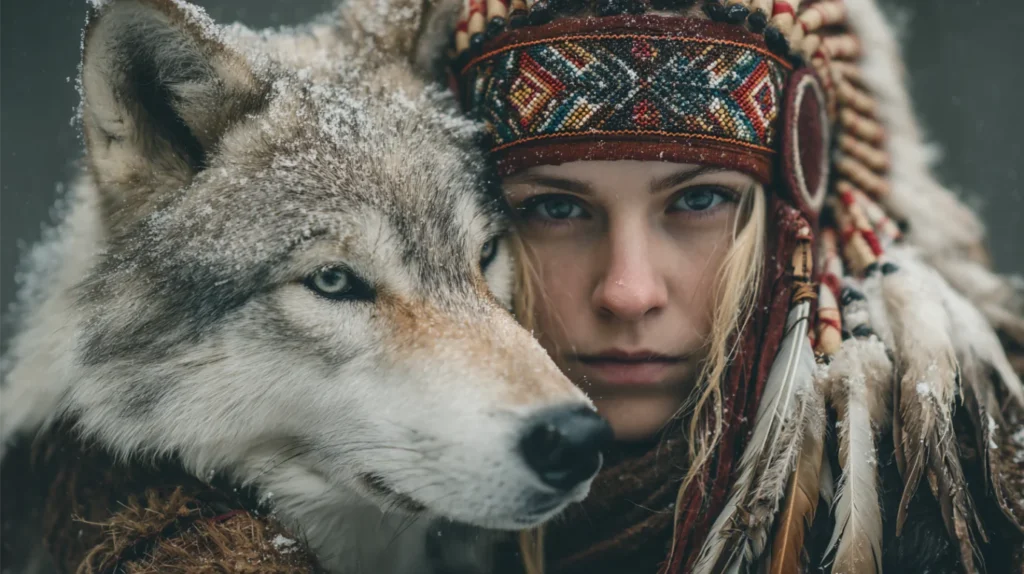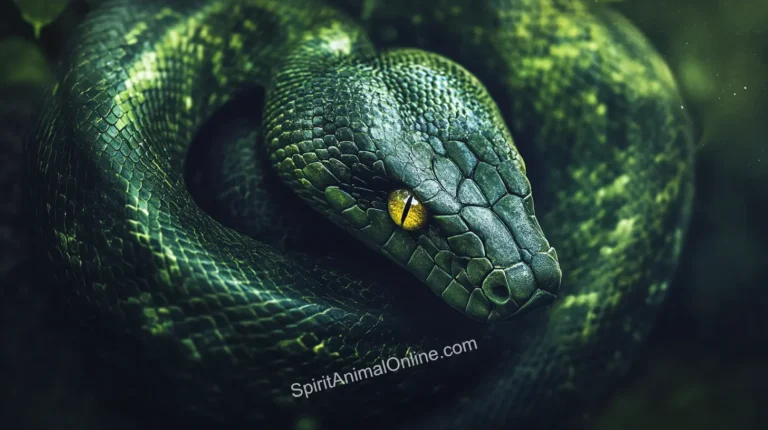Cultural Appropriation and Respecting Spirit Animal Traditions: A Guide to Ethical Animal Symbolism

The phrase “What’s your spirit animal?” has become commonplace in contemporary conversations, often used casually to describe everything from favorite celebrities to preferred coffee orders. Yet beneath this seemingly innocent expression lies a complex web of sacred traditions, cultural heritage, and the delicate balance between appreciation and appropriation. The concepts of spirit animals and totems originate from specific Indigenous traditions across the Americas and Siberia, representing profound spiritual relationships that have been cultivated for thousands of years.
In our interconnected world, the line between cultural exchange and cultural appropriation has become increasingly important to navigate thoughtfully. When we casually adopt terminology like “spirit animal” without understanding its origins, we risk diminishing the sacred nature of these practices while potentially causing harm to the communities from which they originate. This exploration will guide you through understanding the difference between respectful engagement and appropriation, offering practical ways to honor animal symbolism while respecting its cultural roots.
The journey toward ethical engagement with animal symbolism requires us to examine our motivations, educate ourselves about origins, and find ways to connect with animal wisdom that honor rather than exploit traditional knowledge systems.
Understanding Cultural Appropriation vs. Cultural Exchange
Cultural appropriation occurs when elements of one culture are adopted by members of a different cultural group, particularly when a dominant culture takes from a marginalized one without permission, understanding, or credit. This becomes especially problematic when sacred or ceremonial elements are commercialized, trivialized, or stripped of their original meaning and context.

Key characteristics of cultural appropriation include:
- Taking sacred or significant cultural elements without permission
- Profiting from borrowed cultural practices while the originating communities face marginalization
- Misrepresenting or oversimplifying complex spiritual traditions
- Failing to acknowledge the source or significance of borrowed elements
- Using cultural symbols as fashion statements or trends
In contrast, cultural exchange represents a respectful, reciprocal sharing of traditions that benefits all parties involved. True cultural exchange involves learning about context, seeking permission when appropriate, giving credit to origins, and often finding ways to support the communities from which knowledge is shared.
The concept of spirit animals, known by various names across different Indigenous cultures, represents a profound spiritual relationship between humans and the natural world. These relationships are not casual associations but deeply held beliefs about guidance, protection, and spiritual connection that are often earned through ceremony, vision quests, or inherited through family lines.
The Sacred Origins of Spirit Animal and Totem Traditions
Indigenous American Traditions
Across the diverse landscape of Native American cultures, animal spirits hold central roles in spiritual practice, though the specific beliefs and terminology vary significantly between tribes. The Lakota concept of “spirit animals” differs from Ojibwe “totems,” which in turn differs from Pueblo animal guardians. These are not interchangeable concepts but distinct spiritual frameworks developed within specific cultural contexts.
In many Plains tribes, animal spirits may come to individuals through vision quests—sacred journeys undertaken in solitude to receive spiritual guidance. The Ojibwe tradition of totems (called “odoodem”) represents clan identity and spiritual connection passed down through generations, with each clan having responsibilities to protect certain animals and their habitats.
The Inuit peoples of the Arctic have complex relationships with animal spirits, particularly those of seals, whales, and polar bears, believing that successful hunting depends on maintaining proper spiritual relationships with animal spirits. These practices include specific ceremonies, songs, and protocols that ensure respectful interaction with the spiritual realm.
Siberian Shamanic Traditions
In Siberian shamanic cultures, including those of the Evenk, Yakut, and Buryat peoples, animal spirits serve as guides and allies for shamans during spiritual journeys. The concept of “helping spirits” includes animal guides that assist shamans in healing, divination, and traveling between worlds. These relationships are cultivated through years of training, initiation ceremonies, and ongoing spiritual practice.
The Mongolian tradition recognizes animal spirits as part of the greater spiritual ecology, with specific protocols for honoring and working with these forces. Shamans may have multiple animal allies, each serving different purposes in their spiritual work.
The Harm of Misappropriation

When sacred concepts like spirit animals are appropriated, several forms of harm can occur:
Spiritual Harm: Sacred practices lose their power and meaning when removed from their cultural context and ceremonial framework. What was once a profound spiritual relationship becomes a superficial personality test or social media trend.
Cultural Harm: Indigenous communities continue to face restrictions on practicing their own traditions while seeing those same traditions commercialized and trivialized by others. This creates a painful dynamic where their sacred practices are simultaneously suppressed and exploited.
Economic Harm: When non-Indigenous people profit from Indigenous concepts through books, workshops, products, or services without sharing benefits with originating communities, it represents economic exploitation of cultural knowledge.
Educational Harm: Misrepresentation of Indigenous concepts perpetuates stereotypes and misunderstandings, making it harder for people to learn about authentic Indigenous cultures and contemporary Indigenous issues.
Respectful Approaches to Animal Symbolism

Research and Education
Before engaging with any spiritual practice involving animals, invest time in understanding its origins. Read books written by Indigenous authors, attend lectures by Indigenous speakers, and learn about the contemporary issues facing Indigenous communities. Some recommended starting points include:
- Works by Indigenous authors like Vine Deloria Jr., Leslie Marmon Silko, and Robin Wall Kimmerer
- Museums with Indigenous cultural programs and accurate representations
- Indigenous-led educational organizations and cultural centers
- Academic courses on Indigenous studies taught by Indigenous professors
Alternative Terminology and Approaches
If you’re drawn to working with animal symbolism but want to avoid appropriation, consider these alternatives:
Personal Animal Allies: Develop your own terminology that acknowledges your personal relationship with animal wisdom without claiming Indigenous concepts.
Symbolic Animal Guides: Use language that clearly indicates your approach is symbolic rather than claiming traditional spiritual authority.
Animal Wisdom Teachers: Frame your relationship as learning from animals rather than possessing them as “spirit animals.”
Archetypal Animal Energy: Work with animals as universal archetypes while acknowledging that specific traditions have their own frameworks.
Respectful Practice Guidelines
Acknowledge Origins: When discussing animal symbolism, acknowledge that concepts like spirit animals and totems originate from specific Indigenous traditions. Be clear about what you’re practicing and what you’re not claiming.
Support Indigenous Communities: Find ways to support Indigenous rights, land protection, environmental causes, and Indigenous-led organizations. This moves beyond taking knowledge to giving back to communities.
Avoid Sacred Elements: Stay away from specific ceremonial practices, regalia, or ritual elements that belong to closed traditions. Focus on developing your own authentic relationship with animal wisdom.
Practice with Humility: Approach animal symbolism as a student rather than an expert. Remain open to correction and willing to adjust your practices based on new understanding.
Building Authentic Relationships with Animal Wisdom
Direct Observation and Study
One of the most respectful ways to connect with animal wisdom is through direct observation and study of animals themselves. Spend time in nature observing animal behavior, study wildlife biology and ecology, and learn about conservation efforts. This approach builds genuine understanding of animals rather than projecting human meanings onto them.
Nature Journaling: Keep a journal of animal encounters, noting behaviors, habitats, and your personal reflections. This practice develops your own authentic relationship with animal wisdom.
Wildlife Photography and Art: Create visual representations of animals based on careful observation and study. This can deepen your connection while supporting conservation awareness.
Citizen Science Projects: Participate in wildlife monitoring, bird counts, or other scientific endeavors that contribute to animal conservation while building your knowledge.
Meditation and Reflection Practices
Develop meditation practices that honor animals without appropriating specific traditions:
Animal Characteristic Meditation: Reflect on qualities you admire in specific animals and how you might cultivate similar qualities in your own life. For example, consider the patience of a heron, the cooperation of wolves, or the adaptability of ravens.
Habitat Visualization: Meditate on different natural environments and the animals that thrive there, considering what those environments might teach about resilience, adaptation, or community.
Seasonal Animal Awareness: Notice which animals are active during different seasons in your area and reflect on how their rhythms might inform your own life cycles.
Creative Expression
Express your connection to animal wisdom through creative practices:
Writing and Poetry: Create stories, poems, or essays inspired by animal behavior and characteristics, being clear that these are your personal interpretations.
Art and Craft: Make art inspired by animals, focusing on biological accuracy and ecological relationships rather than stereotypical spiritual symbols.
Music and Movement: Develop musical compositions or movement practices inspired by animal grace and behavior.
Supporting Conservation and Indigenous Rights
Environmental Action
One of the most meaningful ways to honor animal wisdom is through conservation action:
Habitat Protection: Support organizations working to protect wildlife habitats and migration corridors.
Climate Action: Address climate change, which threatens animal populations worldwide.
Pollution Reduction: Work to reduce plastic pollution, chemical contamination, and other environmental hazards affecting wildlife.
Sustainable Living: Adopt lifestyle practices that reduce your impact on animal habitats and populations.
Indigenous Rights Support
Honor the origins of animal spirit concepts by supporting Indigenous communities:
Land Rights: Support Indigenous land rights and sovereignty movements.
Cultural Preservation: Contribute to organizations working to preserve Indigenous languages, traditions, and knowledge systems.
Economic Support: Purchase from Indigenous-owned businesses and artisans, particularly those creating traditional crafts and sharing their own cultural knowledge.
Political Advocacy: Support policies that protect Indigenous rights and address historical injustices.
Collaborating Respectfully with Indigenous Communities
If you’re creating products, services, or content related to animal symbolism, meaningful collaboration with Indigenous communities is essential:
Consultation and Partnership
Seek Guidance: Before creating anything that might touch on Indigenous concepts, consult with Indigenous cultural advisors or communities.
Shared Ownership: Consider partnership models where Indigenous communities have ongoing involvement and benefit sharing.
Authentic Representation: Ensure that any Indigenous perspectives are represented authentically and with proper attribution.
Ongoing Relationship: Build long-term relationships rather than one-time consultations.
Revenue Sharing and Attribution
Fair Compensation: Pay appropriate fees for consultation and ongoing use of cultural knowledge.
Revenue Sharing: Share profits from products or services that draw on Indigenous knowledge.
Clear Attribution: Always acknowledge the Indigenous origins of concepts you reference.
Platform Sharing: Use your platform to amplify Indigenous voices and issues.
Creating Your Own Authentic Practice
Developing Personal Symbolism
Rather than appropriating existing traditions, consider developing your own authentic practice:
Family and Ancestral Connections: Explore animal symbolism from your own cultural heritage and family traditions.
Regional Wildlife: Focus on animals native to your bioregion and develop relationships based on local ecology.
Personal Experience: Build your practice around actual encounters and relationships with animals in your life.
Contemporary Context: Create practices that address modern environmental and social issues while honoring animal wisdom.
Ritual and Ceremony Guidelines
If you’re drawn to ceremonial practices involving animals:
Create Your Own: Develop original rituals rather than borrowing from closed traditions.
Focus on Conservation: Center ceremonies around environmental protection and animal welfare.
Community Building: Use animal symbolism to build community around conservation and environmental stewardship.
Seasonal Awareness: Align practices with natural cycles and animal behaviors in your region.
Ethical Considerations for Practitioners and Educators
For Spiritual Teachers and Coaches
If you work in spiritual or personal development fields:
Educate Yourself: Continuously learn about cultural appropriation and Indigenous issues.
Use Appropriate Language: Avoid terms like “spirit animal” and “totem” unless you’re specifically teaching about Indigenous traditions with proper authority and permission.
Acknowledge Limitations: Be clear about what you do and don’t know, and refer students to appropriate Indigenous teachers when relevant.
Support Indigenous Teachers: Refer students to Indigenous teachers and practitioners when they’re interested in traditional practices.
For Content Creators and Artists
Research Thoroughly: Understand the origins and significance of any concepts you reference.
Avoid Sacred Imagery: Stay away from specific religious or ceremonial symbols without proper permission.
Credit Sources: Always acknowledge the Indigenous origins of concepts you discuss.
Platform Indigenous Voices: Use your reach to amplify Indigenous artists, teachers, and activists.
For Product Developers
Consultation First: Consult with Indigenous communities before developing products related to animal spirituality.
Avoid Appropriation: Don’t use terms like “spirit animal” or “totem” in product names or marketing without proper cultural authority.
Support Indigenous Creators: Partner with or purchase from Indigenous artisans and creators.
Transparency: Be clear about your cultural background and the sources of your knowledge.
The Path Forward: Enrichment Through Respect
The path toward ethical engagement with animal symbolism requires ongoing learning, humility, and commitment to justice. When we approach animal wisdom with respect for its origins, we create opportunities for genuine enrichment rather than superficial appropriation.
Respectful engagement means acknowledging that Indigenous communities are the rightful stewards of their own traditions while finding authentic ways to connect with animal wisdom that don’t depend on borrowing sacred concepts. This approach can actually deepen our relationships with animals and nature by grounding them in direct experience, scientific understanding, and genuine reverence.
True spiritual growth comes not from collecting symbols and practices from various traditions, but from developing authentic relationships with the wisdom that surrounds us. Animals offer profound teachings about adaptation, community, resilience, and living in harmony with natural cycles. These teachings are available to all of us through careful observation, respectful study, and direct relationship with the natural world.
Moving Beyond Surface-Level Engagement
The casual use of “spirit animal” in popular culture reflects a broader tendency toward spiritual consumerism—the desire to collect meaningful-sounding concepts without doing the deeper work of understanding and integration. Moving beyond this surface level requires:
Patience: Building authentic relationships with animal wisdom takes time and consistency.
Study: Learning about animal behavior, ecology, and conservation creates a foundation for meaningful symbolism.
Service: Finding ways to serve animals and their habitats transforms abstract symbolism into concrete action.
Community: Connecting with others who share your commitment to ethical engagement creates support for ongoing learning.
Conclusion: Wisdom Through Respect
The journey toward ethical engagement with animal symbolism ultimately leads us to a richer, more authentic relationship with both animals and Indigenous wisdom traditions. When we approach these concepts with respect, humility, and genuine commitment to justice, we create space for true learning and growth.
Rather than diminishing our spiritual practices, acknowledging the origins of concepts like spirit animals and totems can deepen our appreciation for the profound wisdom of Indigenous cultures. This acknowledgment opens doorways to supporting Indigenous rights, protecting animal habitats, and developing our own authentic relationships with the natural world.
The animals that capture our imagination and inspire our growth deserve our respect, protection, and advocacy. The Indigenous communities who developed profound spiritual relationships with these animals deserve recognition, support, and sovereignty over their own traditions. When we honor both animals and Indigenous wisdom through our actions, we create practices that truly serve the interconnected web of life.
As you continue your journey with animal symbolism and spiritual growth, consider this question: How can your practice serve not only your own development but also the wellbeing of animals, the protection of their habitats, and the rights of Indigenous communities who have maintained these relationships for thousands of years?
The answer to this question may lead you toward the most meaningful and transformative spiritual practice of all—one grounded in service, respect, and authentic relationship with the living world around us.





